#wife Zsuzsanna
Explore tagged Tumblr posts
Text
The Angel Makers of Nagyrév (Hungarian: Tiszazugi méregkeverők, "Tiszazug poison-mixers") were a group of women living in the village of Nagyrév, Hungary, who, between 1914 and 1929, poisoned to death an estimated 40–100 people.[1][2] They were supplied arsenic and encouraged to use it by a local midwife named Zsuzsanna Fazekas, wife of Gyula Fazekas, née Zsuzsanna Oláh (Fazekas Gyuláné Oláh Zsuzsanna).
In Hungarian society at that time, the future husband of a teenage bride was selected by her family, and she was forced to accept her parents' choice. Divorce was not allowed socially, even if the husband was an alcoholic or abusive.[8] During World War I, when able-bodied men were sent to fight for Austria-Hungary, rural Nagyrév was an ideal location for holding Allied prisoners of war. With POWs having limited freedom within the village, the women living there often had one or more foreign lovers while their husbands were away.[9] When the men returned, many of them rejected their wives' affairs and wished to return to their previous way of life, creating a volatile situation. At this time, Fazekas began secretly persuading women who wished to escape this situation to poison their husbands using arsenic made by boiling flypaper and skimming off the lethal residue.[10][11]
After the initial killing of their husbands, some of the women went on to poison parents who had become a burden to them, or to get hold of their inheritance. Others poisoned their lovers, some even their sons. As the midwife allegedly asked the poisoners, "Why put up with them?"[12][13]
The first poisoning in Nagyrév took place in 1911; it was not the work of Fazekas. The deaths of other husbands, children, and family members soon followed. The poisoning became a fad, and by the mid-1920s, Nagyrév earned the nickname "the murder district". There were an estimated 45–50 murders over the 18 years that Fazekas lived in the district. She was the closest thing to a doctor the village had, and her cousin was the clerk who filed all the death certificates, allowing the murders to go undetected.[14]
20 notes
·
View notes
Note
This is just a suggestion and feel free to ignore! Something I think would be helpful would be to include at the top of your "Fundies and Adjacent I Follow" type posts a summary of what makes them fundie or adjacent. I haven't heard of the majority of them, so I can't tell if it's a friend of the Duggars, someone with a blog that spouts hate in the name of Christianity, a vlogging family, or just a random family that just so happens to have a bunch of kids. Maybe for the lesser known follow up pregnancy or engagement announcements where most fundie followers would go "who is this...?" linking back to the main post? Thanks for all you do!
Fundies and Adjacent I Follow: Why are they notable (Last Names A-C)
Great Idea! I will be doing all the families I have posted by last names. I am going to start here with A-D. You can see links to all families here.
Alexander Family:
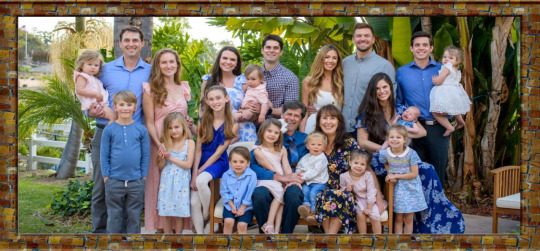
The Alexander Family of California is headed by father Ken Alexander and mother Lori Falk. They have been married since 1980 and share 4 children, 4 children-in-law, and 16 grandchildren as of 11/20/2023.
Lori Alexander runs a blog and Youtube channel called "The Transformed Wife" where she discusses biblical womanhood, marriage, and motherhood.
Anderson Family:
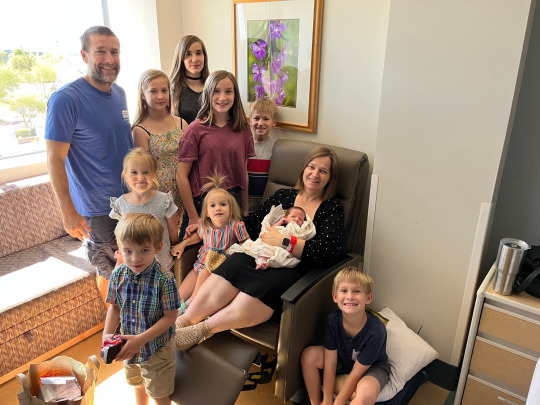
The Anderson Family of Arizona is headed by father Steven Anderson and mother Zsuzsanna Toth. They have been married since 2000 and share 12 children as of 11/20/2023.
Steven is the New IFB movement and pastors the Faithful Word Baptist Church.
Zsuzsanna runs a blog called "Are They All Yours?"
Andregg Family:
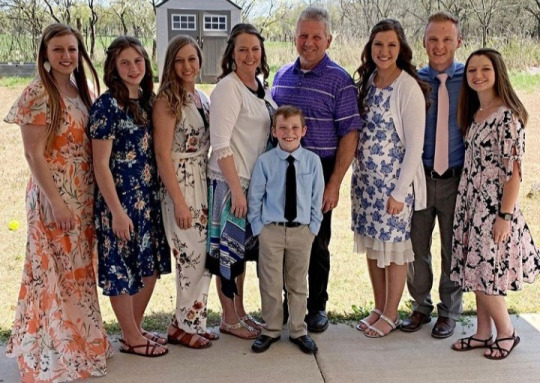
The Andregg family of Arkansas is headed by father Dwayne Andregg and mother Melanie McPherson. They have been married since 1999 and share 6 children, 1 son-in-law, and 2 grandchildren as of 11/20/23.
They are connected to the Wikstrom family as their daughter Lauren married the Wikstrom's son Devin.
The Andreggs have also been notable friends with the Duggar family for years and are members of the IBLP. They were featured on the Duggar's TLC shows.
Dwayne is the former campaign manager for Jim Holt.
Baird Family:
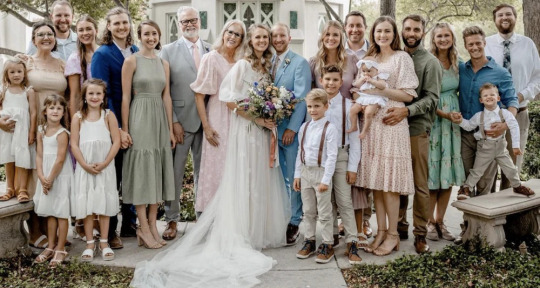
The Baird family of Texas is headed by father Michael Baird and mother Heidi Mick. They have been married since 1982 and share 8 living children, 6 children-in-law, and 9 grandchildren as of 11/20/2023.
Daughters Bethany Beal and Kristen Clark run Girl Defined Ministries.
Balka Family:

The Balka Family of Tennessee is headed by father Mike Balka and late mother Kristy Dotson. They were married in 1993 and share 6 children, 3 children-in-law, and 4 grandchildren as of 11/20/2023.
Son Kelton is married to Josie Bates.
Ballinger Family:

The Ballinger family of Arkansas is headed by father Bob Ballinger and mother Jessica Thomas. They have been married since 1998 and share 7 children, 1 daughter-in-law, and 4 grandchildren as of 11/20/23.
Their son Bobby married Austin Forsyth's sister Meagan.
Bob Ballinger served in the Arkansas General Assembly from 2013 to 2023. Jed and Joy Duggar served as interns for him.
Barrett Family:
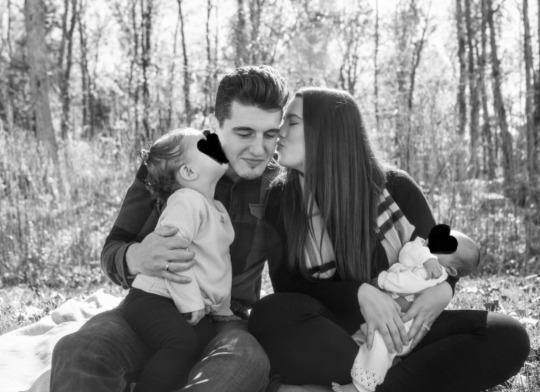
The Barrett family is headed by mother Gabby Barrett and father Cade Foehner. They have been married since 2019 and share 3 children as of 11/20/23.
Gabby Barrett is an accomplished country music singer who originally gained fame on American Idol.
The couple was good friends with Jeremy and Jinger Vuolo while living in LA. Jeremy officiated their wedding.
Bates Family:

The Bates Family of Tennessee is headed by father Gil Bates and mother Kelly Jo Callaham. They have been married since 1987 and share 19 children, 11 children-in-law, and 29 grandchildren as of 11/20/2023.
The Bates family rose to prominence via their friendship with the Duggar Family. They have since gone on to have their own shows with TLC and UPTV.
They are long-time members of the IBLP and Gil Bates is on the board.
Many of the children have popular social media presences.
Bontrager Family:
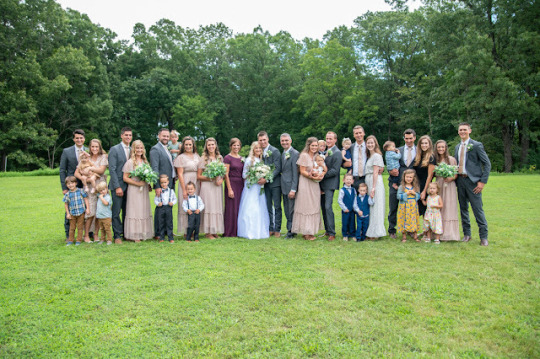
The Bontrager family of Iowa is headed by father Marlin Bontrager and mother Becky. They have been married since 1989 and share 10 children, 7 children-in-law, and 14 grandchildren as of 11/20/2023.
The Bontragers are friends of the Duggars and sons Carson and Joshua are married to Bowers girls.
The unmarried Bontrager children are in a band with their parents.
Bowers Family:
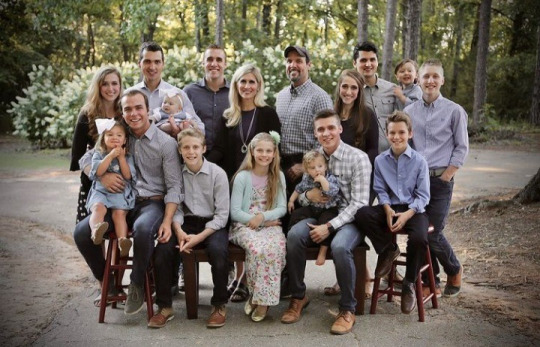
The Bowers Family of Alabama is headed by father Curtis Bowers and mother Lauren McAlvany. They have been married since 1989 and share 9 children, 2 sons-in-law, and 6 grandchildren as of 11/20/2023.
The family is friends of the Duggar Family. Daughters Carolina and Cassidy are married to Bontrager boys.
Bure Family:
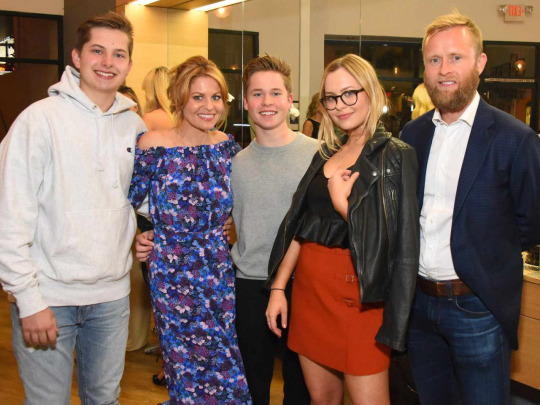
The Bure family is headed by father Valeri Bure and mother Candace Cameron. They have been married since 1996 and share 3 children as of 11/20/2023
Candace was a main cast member of Full House and is now an outspoken Christian actress and sister of Kirk Cameron.
Burnett Family:
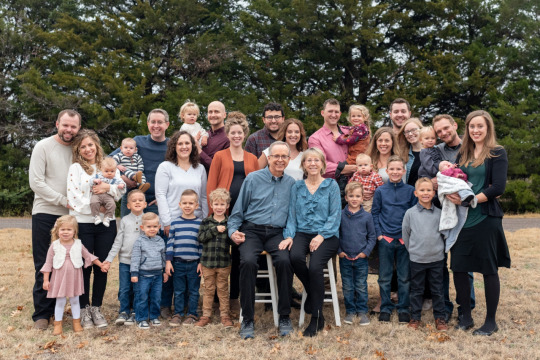
The Burnett family of Oklahoma is headed by father John Burnett and mother Cheryl Clay. They have been married since 1981 and share 8 children, 8 children-in-law, and 19 grandchildren as of 11/20/2023.
They daughter Abbie married John Duggar in 2018. They were at one point members or running in the circles of the IBLP, but I am unsure of the Burnett family affiliation now.
Caldwell Family:
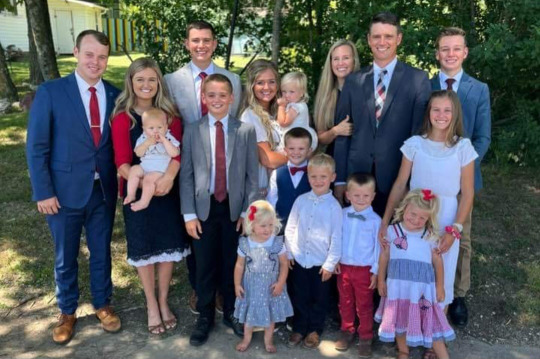
The Caldwell family of Arkansas is headed by father Paul Caldwell and mother Christina Hamrick. They have been married since 1998 and share 9 children, 1 son-in-law, and 4 grandchildren as of 11/20/2023.
Paul Caldwell is the former pastor of the Duggar family church. Their daughter Kendra married Joseph Duggar in 2017. The family was at one point in the IBLP. I am unsure of their current affiliation.
Cameron Family:

The Cameron Family of California is headed by father Kirk Cameron and mother Chelsea Noble. They have been married since 1991 and share 6 children and 2 children-in-law as of 11/20/2023.
Kirk is a former main cast member of Growing Pains and was an actor in the Christian film FireProof. He was featured on several episodes of 19 Kids and Counting.
Clark Family:
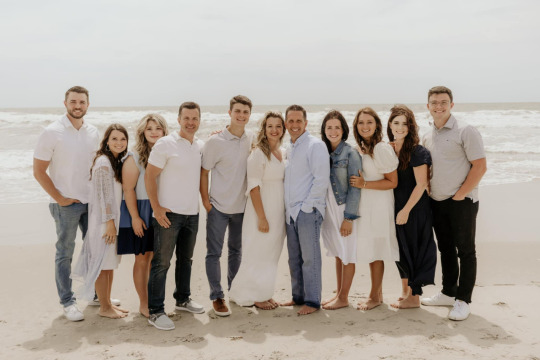
The Clark family of New Jersey is headed by father Charles Clark Jr. and mother Aprile. They share 3 children, 2 children-in-law, 9 granchildren, 6 grandchildren-in-law, and 7 great-grandchildren as of 11/20/2023.
The family runs a church called Solid Rock Baptist Church. They also have a band called Clark Family Band.
Grandson Travis is married to Katie Bates.
Collingsworth Family:
The Collingsworth family of Ohio is headed by father Phillip Collingsworth Sr. and Kimberly Keaton. They have been married since 1986 and share 4 children, 4 children-in-law, and 9 grandchildren as of 11/20/2023.
The family makes up the Collingsworth Family musical group. Daughter Olivia has made music with Lawson Bates. The family also rubs shoulders with the Duggar family.
The Collins Family:

The Collins family of Texas is headed by father Mandrae Collins and mother Karissa Goering. They have been married since 2007 and share 10 children as of 11/20/2023.
Karissa's online presence has garnered the family a lot of negative attention. She promotes giving family size up to God.
Coverett Family:
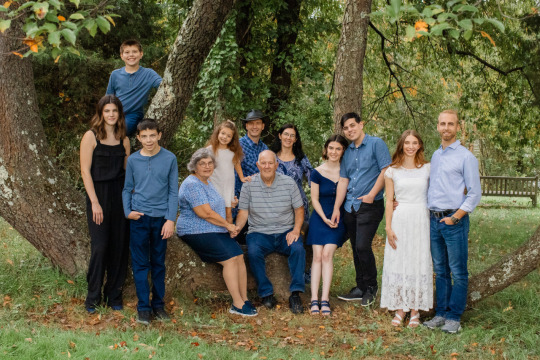
The Coverett Family of Pennsylvania is headed by father Jeremy Coverett and Ellen Vincent. They have been married since 2001 and share 6 children and 1 son-in-law as of 11/20/2023.
Ellen has been in the downline of Jill Rodrigues for many years. Ellen is the sister of the matriarch of the Hill family and introduced Kaylee Rodrigues and Jonathan Hill. Heidi Coverett is now engaged to Timothy Rodrigues.
Crane Family:

The Crane Family of Arkansas is headed by father Josh Crane and mother Melodie. They share 7 children, 2 children-in-law, and 3 grandchildren as of 11/20/2023.
Daughter Madi and her husband work for PragerU along with Lemuel Reber.
The Crane Family is friends of the Duggars and former IBLP members. It is speculated that some leaked information about the Duggar family has come from friends of the Cranes.
6 notes
·
View notes
Photo

The Princess of Wales chose familiar styles for today’s engagements in Pontypridd in south Wales, including a piece dating back to at least 2007. The visit comes ahead of St. David’s Day on Saturday, celebrating the patron saint of Wales. The Prince and Princess started their visit at Pontypridd Market. Rebecca English of The Daily Mail shared a video of the Prince and Princess arriving at the market. The Prince and Princess of Wales have arrived in Pontypridd for an afternoon of engagements. Their visit was somewhat delayed due to the weather. They are currently at the town’s market pic.twitter.com/LeTTcPxaGB — Rebecca English (@RE_DailyMail) February 26, 2025 The royals were greeted by crowds of well-wishers, including a little one dressed as a daffodil, the Welsh national flower. More from the Wales Online coverage. The couple visited Pontypridd Market, which has been at the heart of the community since 1805, and toured the food hall where they rolled up their sleeves to help prepare and cook a batch of traditional Welsh cakes. The pair made the cakes while visiting the Welsh Cake Shop. Rhys Williams of ITV News posted a video of the couple working on the cakes. The Prince and Princess of Wales are making Welsh cakes in Pontypridd market. “You’ll have to sell these for half price,” Prince William says. pic.twitter.com/DrmoHb6bsx — Rhys Williams﮷ (@RhysWilliamsTV) February 26, 2025 More from The Telegraph’s story by Hannah Furness. The Princess appeared impressed with her husband’s efforts, saying: “Those are so good, how did you do that?” “Well, you know,” he said, stepping back with a mock swagger. “My stunning bakery skills. Mary Berry taught me everything I need to know.” A quick video about the cakes was posted on social media by Kensington Palace. Pontypridd Market 🤝 Welsh Cakes Marchnad Pontypridd 🤝 Cacennau Cri pic.twitter.com/KDONcTfHXa — The Prince and Princess of Wales (@KensingtonRoyal) February 26, 2025 Below, Prince William serving some of the cakes. The Prince and Princess spent time greeting those gathered at the market. The weather was hit and miss, as evidenced by the raindrops on the Princess’s umbrella. But you can also see how the sun was out at times. A news release about today’s engagements noted, “In December 2024, Pontypridd was one of a number of towns across Wales that was hit by severe flooding as a result of Storm Bert and Storm Darragh. The Prince and Princess will hear about the experiences of members of the community who were affected by the floods.” Below, you see the Prince and Princess speaking with residents. Embed from Getty Images More from The Evening Standard’s article. Some of their cakes were served up when the prince and princess sat down in the neighbouring Fountain Cafe and chatted over a mug of tea with market traders and other businesses about Storm Bert, which struck in late November bringing widespread flooding to Pontypridd when the River Taff burst its banks. Leanne Walsh, 41, said after meeting the princess: “Kate said it had been raining hard this week and she mentioned the floods, saying she hoped it doesn’t happen again.” They also spent time with a couple whose home was flooded during the storms, Kevin and Zsuzsanna Kidner. More from this Yahoo UK News piece. Kevin and Zsuzsanna are still pinching themselves after Kate and William sat with them in their Sion Street property living room. Kevin, a butcher and fisherman, runs a butcher’s stall in Pontypridd market with his son. Kevin said the visit of a lifetime was very strange and it was surreal to have them in his house. His wife Zsuzsanna said: “It was lovely to see them, I’ve watched Will as a baby on the TV, I’ve watched him grow up and now he’s been in my living room! It was very lovely and they were very very friendly. It’s nice they chose us!” The Prince and Princess with the Kidners. The couple then visited Meadow Street Community Garden and Woodland, designed to be “a safe and welcoming place where people from all walks of life can come and enjoy the benefits of nature and homegrown produce and have opportunities to share and learn new skills.”We return to Wales Online for more information. Project manager Helen Williams and Dawn Parker, who have been involved in the project since it began in 2020, were emotional when explained to reporter Ellie Gosley what today’s visit meant to them. They took the Prince and Princess on a tour around the garden during their visit. Dawn said: “The last four years here have been really significant for me, so to be able to share it with everybody else, is really special. The buzz it’s given everyone here is wonderful – everyone’s been so excited and worked really hard – it just means so much. “They [William and Kate] were fascinated about what we did and the different sort of people who come here. It was hard to drag them away, they just wanted to get involved” The couple also heard about medical balms made with plants from the garden. Embed from Getty ImagesA wave from the Princess as the couple was leaving. Kensington Palace posted on social media about this element of the day’s engagements. Now for our look at what Kate wore for today’s engagements. Many immediately recognized her vibrant red Sarah Burton for Alexander McQueen coat, a nod to the red Welsh dragon on the country’s flag. Most recently, we saw the coat worn in December of last year for the taping of the Together at Christmas carol concert at Westminster Abbey. It was first noted at the October 2020 Hold Still community launch; it was worn again in December 2020 as a royal train tour concluded; it made another appearance in November 2022 at a rugby match. Beneath the coat, the princess appeared to be wearing a Gucci skirt from the Resort ’19 runway collection. The Pleated Checked Wool Twill Midi Skirt ($1980, no longer available) is made of 100% wool twill in shades of black, burgundy, and beige. It was first noted in January 2020 when images were released of the Princess shooting photo portraits of Holocaust survivors. Below, the Princess with the Frank family. Perhaps the most intriguing item worn today is the Princess’s Ralph Lauren jacket, first noted when worn to Cheltenham back in March of 2007. Middleton Maven shared a good shot of the jacket, a fitted design with princess seams, notched lapels, suede panels, and buttoned pockets. The princess’s boots are one of her Gianvito Rossi pairs, similar to the Glen style shown below, but with a pointer toe. A video shared on the Kensington Palace Instagram page showed the couple as they arrived at the train station. A screen grab from the video shows the Princess carrying a tote bag. The bag could be the Zipped East West Leather Tote ($610) by British heritage brand Aspinal, seen below left. Another possibility is Mulberry’s Bayswater Tote ($1016), seen below right, with thanks to Middleton Maven for the Mulberry suggestion. UPDATE: After seeing more photos, it is clear the tote is the Mulberry style shown below, the Bayswater in Oak. The Princess wore her Removable Teardrop Garnet Charm Hoops (£95, about $115) by Welsh jeweler Spells of Love. The hoops are crafted of recycled 18K gold vermeil over sterling silver with removable garnet charms. I’ll leave you with one more photo from today. VIDEOS: (function(d, s, id) var js, fjs = d.getElementsByTagName(s)[0]; if (d.getElementById(id)) return; js = d.createElement(s); js.id = id; js.src = "//connect.facebook.net/en_US/sdk.js#xfbml=1&version=v2.0"; fjs.parentNode.insertBefore(js, fjs); (document, 'script', 'facebook-jssdk')); Source link
0 notes
Photo

The Princess of Wales chose familiar styles for today’s engagements in Pontypridd in south Wales, including a piece dating back to at least 2007. The visit comes ahead of St. David’s Day on Saturday, celebrating the patron saint of Wales. The Prince and Princess started their visit at Pontypridd Market. Rebecca English of The Daily Mail shared a video of the Prince and Princess arriving at the market. The Prince and Princess of Wales have arrived in Pontypridd for an afternoon of engagements. Their visit was somewhat delayed due to the weather. They are currently at the town’s market pic.twitter.com/LeTTcPxaGB — Rebecca English (@RE_DailyMail) February 26, 2025 The royals were greeted by crowds of well-wishers, including a little one dressed as a daffodil, the Welsh national flower. More from the Wales Online coverage. The couple visited Pontypridd Market, which has been at the heart of the community since 1805, and toured the food hall where they rolled up their sleeves to help prepare and cook a batch of traditional Welsh cakes. The pair made the cakes while visiting the Welsh Cake Shop. Rhys Williams of ITV News posted a video of the couple working on the cakes. The Prince and Princess of Wales are making Welsh cakes in Pontypridd market. “You’ll have to sell these for half price,” Prince William says. pic.twitter.com/DrmoHb6bsx — Rhys Williams﮷ (@RhysWilliamsTV) February 26, 2025 More from The Telegraph’s story by Hannah Furness. The Princess appeared impressed with her husband’s efforts, saying: “Those are so good, how did you do that?” “Well, you know,” he said, stepping back with a mock swagger. “My stunning bakery skills. Mary Berry taught me everything I need to know.” A quick video about the cakes was posted on social media by Kensington Palace. Pontypridd Market 🤝 Welsh Cakes Marchnad Pontypridd 🤝 Cacennau Cri pic.twitter.com/KDONcTfHXa — The Prince and Princess of Wales (@KensingtonRoyal) February 26, 2025 Below, Prince William serving some of the cakes. The Prince and Princess spent time greeting those gathered at the market. The weather was hit and miss, as evidenced by the raindrops on the Princess’s umbrella. But you can also see how the sun was out at times. A news release about today’s engagements noted, “In December 2024, Pontypridd was one of a number of towns across Wales that was hit by severe flooding as a result of Storm Bert and Storm Darragh. The Prince and Princess will hear about the experiences of members of the community who were affected by the floods.” Below, you see the Prince and Princess speaking with residents. Embed from Getty Images More from The Evening Standard’s article. Some of their cakes were served up when the prince and princess sat down in the neighbouring Fountain Cafe and chatted over a mug of tea with market traders and other businesses about Storm Bert, which struck in late November bringing widespread flooding to Pontypridd when the River Taff burst its banks. Leanne Walsh, 41, said after meeting the princess: “Kate said it had been raining hard this week and she mentioned the floods, saying she hoped it doesn’t happen again.” They also spent time with a couple whose home was flooded during the storms, Kevin and Zsuzsanna Kidner. More from this Yahoo UK News piece. Kevin and Zsuzsanna are still pinching themselves after Kate and William sat with them in their Sion Street property living room. Kevin, a butcher and fisherman, runs a butcher’s stall in Pontypridd market with his son. Kevin said the visit of a lifetime was very strange and it was surreal to have them in his house. His wife Zsuzsanna said: “It was lovely to see them, I’ve watched Will as a baby on the TV, I’ve watched him grow up and now he’s been in my living room! It was very lovely and they were very very friendly. It’s nice they chose us!” The Prince and Princess with the Kidners. The couple then visited Meadow Street Community Garden and Woodland, designed to be “a safe and welcoming place where people from all walks of life can come and enjoy the benefits of nature and homegrown produce and have opportunities to share and learn new skills.”We return to Wales Online for more information. Project manager Helen Williams and Dawn Parker, who have been involved in the project since it began in 2020, were emotional when explained to reporter Ellie Gosley what today’s visit meant to them. They took the Prince and Princess on a tour around the garden during their visit. Dawn said: “The last four years here have been really significant for me, so to be able to share it with everybody else, is really special. The buzz it’s given everyone here is wonderful – everyone’s been so excited and worked really hard – it just means so much. “They [William and Kate] were fascinated about what we did and the different sort of people who come here. It was hard to drag them away, they just wanted to get involved” The couple also heard about medical balms made with plants from the garden. Embed from Getty ImagesA wave from the Princess as the couple was leaving. Kensington Palace posted on social media about this element of the day’s engagements. Now for our look at what Kate wore for today’s engagements. Many immediately recognized her vibrant red Sarah Burton for Alexander McQueen coat, a nod to the red Welsh dragon on the country’s flag. Most recently, we saw the coat worn in December of last year for the taping of the Together at Christmas carol concert at Westminster Abbey. It was first noted at the October 2020 Hold Still community launch; it was worn again in December 2020 as a royal train tour concluded; it made another appearance in November 2022 at a rugby match. Beneath the coat, the princess appeared to be wearing a Gucci skirt from the Resort ’19 runway collection. The Pleated Checked Wool Twill Midi Skirt ($1980, no longer available) is made of 100% wool twill in shades of black, burgundy, and beige. It was first noted in January 2020 when images were released of the Princess shooting photo portraits of Holocaust survivors. Below, the Princess with the Frank family. Perhaps the most intriguing item worn today is the Princess’s Ralph Lauren jacket, first noted when worn to Cheltenham back in March of 2007. Middleton Maven shared a good shot of the jacket, a fitted design with princess seams, notched lapels, suede panels, and buttoned pockets. The princess’s boots are one of her Gianvito Rossi pairs, similar to the Glen style shown below, but with a pointer toe. A video shared on the Kensington Palace Instagram page showed the couple as they arrived at the train station. A screen grab from the video shows the Princess carrying a tote bag. The bag could be the Zipped East West Leather Tote ($610) by British heritage brand Aspinal, seen below left. Another possibility is Mulberry’s Bayswater Tote ($1016), seen below right, with thanks to Middleton Maven for the Mulberry suggestion. UPDATE: After seeing more photos, it is clear the tote is the Mulberry style shown below, the Bayswater in Oak. The Princess wore her Removable Teardrop Garnet Charm Hoops (£95, about $115) by Welsh jeweler Spells of Love. The hoops are crafted of recycled 18K gold vermeil over sterling silver with removable garnet charms. I’ll leave you with one more photo from today. VIDEOS: (function(d, s, id) var js, fjs = d.getElementsByTagName(s)[0]; if (d.getElementById(id)) return; js = d.createElement(s); js.id = id; js.src = "//connect.facebook.net/en_US/sdk.js#xfbml=1&version=v2.0"; fjs.parentNode.insertBefore(js, fjs); (document, 'script', 'facebook-jssdk')); Source link
0 notes
Photo

The Princess of Wales chose familiar styles for today’s engagements in Pontypridd in south Wales, including a piece dating back to at least 2007. The visit comes ahead of St. David’s Day on Saturday, celebrating the patron saint of Wales. The Prince and Princess started their visit at Pontypridd Market. Rebecca English of The Daily Mail shared a video of the Prince and Princess arriving at the market. The Prince and Princess of Wales have arrived in Pontypridd for an afternoon of engagements. Their visit was somewhat delayed due to the weather. They are currently at the town’s market pic.twitter.com/LeTTcPxaGB — Rebecca English (@RE_DailyMail) February 26, 2025 The royals were greeted by crowds of well-wishers, including a little one dressed as a daffodil, the Welsh national flower. More from the Wales Online coverage. The couple visited Pontypridd Market, which has been at the heart of the community since 1805, and toured the food hall where they rolled up their sleeves to help prepare and cook a batch of traditional Welsh cakes. The pair made the cakes while visiting the Welsh Cake Shop. Rhys Williams of ITV News posted a video of the couple working on the cakes. The Prince and Princess of Wales are making Welsh cakes in Pontypridd market. “You’ll have to sell these for half price,” Prince William says. pic.twitter.com/DrmoHb6bsx — Rhys Williams﮷ (@RhysWilliamsTV) February 26, 2025 More from The Telegraph’s story by Hannah Furness. The Princess appeared impressed with her husband’s efforts, saying: “Those are so good, how did you do that?” “Well, you know,” he said, stepping back with a mock swagger. “My stunning bakery skills. Mary Berry taught me everything I need to know.” A quick video about the cakes was posted on social media by Kensington Palace. Pontypridd Market 🤝 Welsh Cakes Marchnad Pontypridd 🤝 Cacennau Cri pic.twitter.com/KDONcTfHXa — The Prince and Princess of Wales (@KensingtonRoyal) February 26, 2025 Below, Prince William serving some of the cakes. The Prince and Princess spent time greeting those gathered at the market. The weather was hit and miss, as evidenced by the raindrops on the Princess’s umbrella. But you can also see how the sun was out at times. A news release about today’s engagements noted, “In December 2024, Pontypridd was one of a number of towns across Wales that was hit by severe flooding as a result of Storm Bert and Storm Darragh. The Prince and Princess will hear about the experiences of members of the community who were affected by the floods.” Below, you see the Prince and Princess speaking with residents. Embed from Getty Images More from The Evening Standard’s article. Some of their cakes were served up when the prince and princess sat down in the neighbouring Fountain Cafe and chatted over a mug of tea with market traders and other businesses about Storm Bert, which struck in late November bringing widespread flooding to Pontypridd when the River Taff burst its banks. Leanne Walsh, 41, said after meeting the princess: “Kate said it had been raining hard this week and she mentioned the floods, saying she hoped it doesn’t happen again.” They also spent time with a couple whose home was flooded during the storms, Kevin and Zsuzsanna Kidner. More from this Yahoo UK News piece. Kevin and Zsuzsanna are still pinching themselves after Kate and William sat with them in their Sion Street property living room. Kevin, a butcher and fisherman, runs a butcher’s stall in Pontypridd market with his son. Kevin said the visit of a lifetime was very strange and it was surreal to have them in his house. His wife Zsuzsanna said: “It was lovely to see them, I’ve watched Will as a baby on the TV, I’ve watched him grow up and now he’s been in my living room! It was very lovely and they were very very friendly. It’s nice they chose us!” The Prince and Princess with the Kidners. The couple then visited Meadow Street Community Garden and Woodland, designed to be “a safe and welcoming place where people from all walks of life can come and enjoy the benefits of nature and homegrown produce and have opportunities to share and learn new skills.”We return to Wales Online for more information. Project manager Helen Williams and Dawn Parker, who have been involved in the project since it began in 2020, were emotional when explained to reporter Ellie Gosley what today’s visit meant to them. They took the Prince and Princess on a tour around the garden during their visit. Dawn said: “The last four years here have been really significant for me, so to be able to share it with everybody else, is really special. The buzz it’s given everyone here is wonderful – everyone’s been so excited and worked really hard – it just means so much. “They [William and Kate] were fascinated about what we did and the different sort of people who come here. It was hard to drag them away, they just wanted to get involved” The couple also heard about medical balms made with plants from the garden. Embed from Getty ImagesA wave from the Princess as the couple was leaving. Kensington Palace posted on social media about this element of the day’s engagements. Now for our look at what Kate wore for today’s engagements. Many immediately recognized her vibrant red Sarah Burton for Alexander McQueen coat, a nod to the red Welsh dragon on the country’s flag. Most recently, we saw the coat worn in December of last year for the taping of the Together at Christmas carol concert at Westminster Abbey. It was first noted at the October 2020 Hold Still community launch; it was worn again in December 2020 as a royal train tour concluded; it made another appearance in November 2022 at a rugby match. Beneath the coat, the princess appeared to be wearing a Gucci skirt from the Resort ’19 runway collection. The Pleated Checked Wool Twill Midi Skirt ($1980, no longer available) is made of 100% wool twill in shades of black, burgundy, and beige. It was first noted in January 2020 when images were released of the Princess shooting photo portraits of Holocaust survivors. Below, the Princess with the Frank family. Perhaps the most intriguing item worn today is the Princess’s Ralph Lauren jacket, first noted when worn to Cheltenham back in March of 2007. Middleton Maven shared a good shot of the jacket, a fitted design with princess seams, notched lapels, suede panels, and buttoned pockets. The princess’s boots are one of her Gianvito Rossi pairs, similar to the Glen style shown below, but with a pointer toe. A video shared on the Kensington Palace Instagram page showed the couple as they arrived at the train station. A screen grab from the video shows the Princess carrying a tote bag. The bag could be the Zipped East West Leather Tote ($610) by British heritage brand Aspinal, seen below left. Another possibility is Mulberry’s Bayswater Tote ($1016), seen below right, with thanks to Middleton Maven for the Mulberry suggestion. UPDATE: After seeing more photos, it is clear the tote is the Mulberry style shown below, the Bayswater in Oak. The Princess wore her Removable Teardrop Garnet Charm Hoops (£95, about $115) by Welsh jeweler Spells of Love. The hoops are crafted of recycled 18K gold vermeil over sterling silver with removable garnet charms. I’ll leave you with one more photo from today. VIDEOS: (function(d, s, id) var js, fjs = d.getElementsByTagName(s)[0]; if (d.getElementById(id)) return; js = d.createElement(s); js.id = id; js.src = "//connect.facebook.net/en_US/sdk.js#xfbml=1&version=v2.0"; fjs.parentNode.insertBefore(js, fjs); (document, 'script', 'facebook-jssdk')); Source link
0 notes
Photo

The Princess of Wales chose familiar styles for today’s engagements in Pontypridd in south Wales, including a piece dating back to at least 2007. The visit comes ahead of St. David’s Day on Saturday, celebrating the patron saint of Wales. The Prince and Princess started their visit at Pontypridd Market. Rebecca English of The Daily Mail shared a video of the Prince and Princess arriving at the market. The Prince and Princess of Wales have arrived in Pontypridd for an afternoon of engagements. Their visit was somewhat delayed due to the weather. They are currently at the town’s market pic.twitter.com/LeTTcPxaGB — Rebecca English (@RE_DailyMail) February 26, 2025 The royals were greeted by crowds of well-wishers, including a little one dressed as a daffodil, the Welsh national flower. More from the Wales Online coverage. The couple visited Pontypridd Market, which has been at the heart of the community since 1805, and toured the food hall where they rolled up their sleeves to help prepare and cook a batch of traditional Welsh cakes. The pair made the cakes while visiting the Welsh Cake Shop. Rhys Williams of ITV News posted a video of the couple working on the cakes. The Prince and Princess of Wales are making Welsh cakes in Pontypridd market. “You’ll have to sell these for half price,” Prince William says. pic.twitter.com/DrmoHb6bsx — Rhys Williams﮷ (@RhysWilliamsTV) February 26, 2025 More from The Telegraph’s story by Hannah Furness. The Princess appeared impressed with her husband’s efforts, saying: “Those are so good, how did you do that?” “Well, you know,” he said, stepping back with a mock swagger. “My stunning bakery skills. Mary Berry taught me everything I need to know.” A quick video about the cakes was posted on social media by Kensington Palace. Pontypridd Market 🤝 Welsh Cakes Marchnad Pontypridd 🤝 Cacennau Cri pic.twitter.com/KDONcTfHXa — The Prince and Princess of Wales (@KensingtonRoyal) February 26, 2025 Below, Prince William serving some of the cakes. The Prince and Princess spent time greeting those gathered at the market. The weather was hit and miss, as evidenced by the raindrops on the Princess’s umbrella. But you can also see how the sun was out at times. A news release about today’s engagements noted, “In December 2024, Pontypridd was one of a number of towns across Wales that was hit by severe flooding as a result of Storm Bert and Storm Darragh. The Prince and Princess will hear about the experiences of members of the community who were affected by the floods.” Below, you see the Prince and Princess speaking with residents. Embed from Getty Images More from The Evening Standard’s article. Some of their cakes were served up when the prince and princess sat down in the neighbouring Fountain Cafe and chatted over a mug of tea with market traders and other businesses about Storm Bert, which struck in late November bringing widespread flooding to Pontypridd when the River Taff burst its banks. Leanne Walsh, 41, said after meeting the princess: “Kate said it had been raining hard this week and she mentioned the floods, saying she hoped it doesn’t happen again.” They also spent time with a couple whose home was flooded during the storms, Kevin and Zsuzsanna Kidner. More from this Yahoo UK News piece. Kevin and Zsuzsanna are still pinching themselves after Kate and William sat with them in their Sion Street property living room. Kevin, a butcher and fisherman, runs a butcher’s stall in Pontypridd market with his son. Kevin said the visit of a lifetime was very strange and it was surreal to have them in his house. His wife Zsuzsanna said: “It was lovely to see them, I’ve watched Will as a baby on the TV, I’ve watched him grow up and now he’s been in my living room! It was very lovely and they were very very friendly. It’s nice they chose us!” The Prince and Princess with the Kidners. The couple then visited Meadow Street Community Garden and Woodland, designed to be “a safe and welcoming place where people from all walks of life can come and enjoy the benefits of nature and homegrown produce and have opportunities to share and learn new skills.”We return to Wales Online for more information. Project manager Helen Williams and Dawn Parker, who have been involved in the project since it began in 2020, were emotional when explained to reporter Ellie Gosley what today’s visit meant to them. They took the Prince and Princess on a tour around the garden during their visit. Dawn said: “The last four years here have been really significant for me, so to be able to share it with everybody else, is really special. The buzz it’s given everyone here is wonderful – everyone’s been so excited and worked really hard – it just means so much. “They [William and Kate] were fascinated about what we did and the different sort of people who come here. It was hard to drag them away, they just wanted to get involved” The couple also heard about medical balms made with plants from the garden. Embed from Getty ImagesA wave from the Princess as the couple was leaving. Kensington Palace posted on social media about this element of the day’s engagements. Now for our look at what Kate wore for today’s engagements. Many immediately recognized her vibrant red Sarah Burton for Alexander McQueen coat, a nod to the red Welsh dragon on the country’s flag. Most recently, we saw the coat worn in December of last year for the taping of the Together at Christmas carol concert at Westminster Abbey. It was first noted at the October 2020 Hold Still community launch; it was worn again in December 2020 as a royal train tour concluded; it made another appearance in November 2022 at a rugby match. Beneath the coat, the princess appeared to be wearing a Gucci skirt from the Resort ’19 runway collection. The Pleated Checked Wool Twill Midi Skirt ($1980, no longer available) is made of 100% wool twill in shades of black, burgundy, and beige. It was first noted in January 2020 when images were released of the Princess shooting photo portraits of Holocaust survivors. Below, the Princess with the Frank family. Perhaps the most intriguing item worn today is the Princess’s Ralph Lauren jacket, first noted when worn to Cheltenham back in March of 2007. Middleton Maven shared a good shot of the jacket, a fitted design with princess seams, notched lapels, suede panels, and buttoned pockets. The princess’s boots are one of her Gianvito Rossi pairs, similar to the Glen style shown below, but with a pointer toe. A video shared on the Kensington Palace Instagram page showed the couple as they arrived at the train station. A screen grab from the video shows the Princess carrying a tote bag. The bag could be the Zipped East West Leather Tote ($610) by British heritage brand Aspinal, seen below left. Another possibility is Mulberry’s Bayswater Tote ($1016), seen below right, with thanks to Middleton Maven for the Mulberry suggestion. UPDATE: After seeing more photos, it is clear the tote is the Mulberry style shown below, the Bayswater in Oak. The Princess wore her Removable Teardrop Garnet Charm Hoops (£95, about $115) by Welsh jeweler Spells of Love. The hoops are crafted of recycled 18K gold vermeil over sterling silver with removable garnet charms. I’ll leave you with one more photo from today. VIDEOS: (function(d, s, id) var js, fjs = d.getElementsByTagName(s)[0]; if (d.getElementById(id)) return; js = d.createElement(s); js.id = id; js.src = "//connect.facebook.net/en_US/sdk.js#xfbml=1&version=v2.0"; fjs.parentNode.insertBefore(js, fjs); (document, 'script', 'facebook-jssdk')); Source link
0 notes
Photo

The Princess of Wales chose familiar styles for today’s engagements in Pontypridd in south Wales, including a piece dating back to at least 2007. The visit comes ahead of St. David’s Day on Saturday, celebrating the patron saint of Wales. The Prince and Princess started their visit at Pontypridd Market. Rebecca English of The Daily Mail shared a video of the Prince and Princess arriving at the market. The Prince and Princess of Wales have arrived in Pontypridd for an afternoon of engagements. Their visit was somewhat delayed due to the weather. They are currently at the town’s market pic.twitter.com/LeTTcPxaGB — Rebecca English (@RE_DailyMail) February 26, 2025 The royals were greeted by crowds of well-wishers, including a little one dressed as a daffodil, the Welsh national flower. More from the Wales Online coverage. The couple visited Pontypridd Market, which has been at the heart of the community since 1805, and toured the food hall where they rolled up their sleeves to help prepare and cook a batch of traditional Welsh cakes. The pair made the cakes while visiting the Welsh Cake Shop. Rhys Williams of ITV News posted a video of the couple working on the cakes. The Prince and Princess of Wales are making Welsh cakes in Pontypridd market. “You’ll have to sell these for half price,” Prince William says. pic.twitter.com/DrmoHb6bsx — Rhys Williams﮷ (@RhysWilliamsTV) February 26, 2025 More from The Telegraph’s story by Hannah Furness. The Princess appeared impressed with her husband’s efforts, saying: “Those are so good, how did you do that?” “Well, you know,” he said, stepping back with a mock swagger. “My stunning bakery skills. Mary Berry taught me everything I need to know.” A quick video about the cakes was posted on social media by Kensington Palace. Pontypridd Market 🤝 Welsh Cakes Marchnad Pontypridd 🤝 Cacennau Cri pic.twitter.com/KDONcTfHXa — The Prince and Princess of Wales (@KensingtonRoyal) February 26, 2025 Below, Prince William serving some of the cakes. The Prince and Princess spent time greeting those gathered at the market. The weather was hit and miss, as evidenced by the raindrops on the Princess’s umbrella. But you can also see how the sun was out at times. A news release about today’s engagements noted, “In December 2024, Pontypridd was one of a number of towns across Wales that was hit by severe flooding as a result of Storm Bert and Storm Darragh. The Prince and Princess will hear about the experiences of members of the community who were affected by the floods.” Below, you see the Prince and Princess speaking with residents. Embed from Getty Images More from The Evening Standard’s article. Some of their cakes were served up when the prince and princess sat down in the neighbouring Fountain Cafe and chatted over a mug of tea with market traders and other businesses about Storm Bert, which struck in late November bringing widespread flooding to Pontypridd when the River Taff burst its banks. Leanne Walsh, 41, said after meeting the princess: “Kate said it had been raining hard this week and she mentioned the floods, saying she hoped it doesn’t happen again.” They also spent time with a couple whose home was flooded during the storms, Kevin and Zsuzsanna Kidner. More from this Yahoo UK News piece. Kevin and Zsuzsanna are still pinching themselves after Kate and William sat with them in their Sion Street property living room. Kevin, a butcher and fisherman, runs a butcher’s stall in Pontypridd market with his son. Kevin said the visit of a lifetime was very strange and it was surreal to have them in his house. His wife Zsuzsanna said: “It was lovely to see them, I’ve watched Will as a baby on the TV, I’ve watched him grow up and now he’s been in my living room! It was very lovely and they were very very friendly. It’s nice they chose us!” The Prince and Princess with the Kidners. The couple then visited Meadow Street Community Garden and Woodland, designed to be “a safe and welcoming place where people from all walks of life can come and enjoy the benefits of nature and homegrown produce and have opportunities to share and learn new skills.”We return to Wales Online for more information. Project manager Helen Williams and Dawn Parker, who have been involved in the project since it began in 2020, were emotional when explained to reporter Ellie Gosley what today’s visit meant to them. They took the Prince and Princess on a tour around the garden during their visit. Dawn said: “The last four years here have been really significant for me, so to be able to share it with everybody else, is really special. The buzz it’s given everyone here is wonderful – everyone’s been so excited and worked really hard – it just means so much. “They [William and Kate] were fascinated about what we did and the different sort of people who come here. It was hard to drag them away, they just wanted to get involved” The couple also heard about medical balms made with plants from the garden. Embed from Getty ImagesA wave from the Princess as the couple was leaving. Kensington Palace posted on social media about this element of the day’s engagements. Now for our look at what Kate wore for today’s engagements. Many immediately recognized her vibrant red Sarah Burton for Alexander McQueen coat, a nod to the red Welsh dragon on the country’s flag. Most recently, we saw the coat worn in December of last year for the taping of the Together at Christmas carol concert at Westminster Abbey. It was first noted at the October 2020 Hold Still community launch; it was worn again in December 2020 as a royal train tour concluded; it made another appearance in November 2022 at a rugby match. Beneath the coat, the princess appeared to be wearing a Gucci skirt from the Resort ’19 runway collection. The Pleated Checked Wool Twill Midi Skirt ($1980, no longer available) is made of 100% wool twill in shades of black, burgundy, and beige. It was first noted in January 2020 when images were released of the Princess shooting photo portraits of Holocaust survivors. Below, the Princess with the Frank family. Perhaps the most intriguing item worn today is the Princess’s Ralph Lauren jacket, first noted when worn to Cheltenham back in March of 2007. Middleton Maven shared a good shot of the jacket, a fitted design with princess seams, notched lapels, suede panels, and buttoned pockets. The princess’s boots are one of her Gianvito Rossi pairs, similar to the Glen style shown below, but with a pointer toe. A video shared on the Kensington Palace Instagram page showed the couple as they arrived at the train station. A screen grab from the video shows the Princess carrying a tote bag. The bag could be the Zipped East West Leather Tote ($610) by British heritage brand Aspinal, seen below left. Another possibility is Mulberry’s Bayswater Tote ($1016), seen below right, with thanks to Middleton Maven for the Mulberry suggestion. UPDATE: After seeing more photos, it is clear the tote is the Mulberry style shown below, the Bayswater in Oak. The Princess wore her Removable Teardrop Garnet Charm Hoops (£95, about $115) by Welsh jeweler Spells of Love. The hoops are crafted of recycled 18K gold vermeil over sterling silver with removable garnet charms. I’ll leave you with one more photo from today. VIDEOS: (function(d, s, id) var js, fjs = d.getElementsByTagName(s)[0]; if (d.getElementById(id)) return; js = d.createElement(s); js.id = id; js.src = "//connect.facebook.net/en_US/sdk.js#xfbml=1&version=v2.0"; fjs.parentNode.insertBefore(js, fjs); (document, 'script', 'facebook-jssdk')); Source link
0 notes
Text
To Catch a Bus (after a "Star Wars" Robot Narrative)
To Catch a Bus (after a "Star Wars" Robot Narrative)
Wednesday morning, January 29, 2025

This dream sequence occurs in a few different modes and levels of discernment. Still, it corresponds with the predictable stages and patterns of causality, as has been the case for over 50 years in every sleep cycle.
In a non-physical stage, like watching events while incorporeal, a "Star Wars" scenario presents itself in an impersonal imagining. I watch a robot move through an area reminiscent of a video game arcade. It is dark, but I see several features. Each is about the same size as a typical coin-operated video game. Even so, I see them as computers for maintaining various systems. I see glowing geometrical patterns on the screens. I think the robot is changing how the computers work.
Eventually, my sense of physicality becomes part of my dream. I know one computer can produce unlimited credits. It creates various fictitious coins. Later, it prints paper money. The paper money comes with extra sections above and below the otherwise usable currency. I try to remove the extra parts by tearing along the perforated lines. However, the tears are irregular (to be expected in the dream state). I leave the rest as they are because I think they are still usable this way.
The above outcome is the typical association with coordination, mainly hand mobility, a common outcome for dream segments. This type of content occurs each sleep cycle as an attempt to gain real-world hand mobility, which often naturally fails while still in the dream state during R.E.M. atonia. It is a simple attempt to come to my senses.
The narrative fades, and I sense the need to catch a school bus as I enter a different mode of dreaming.
Now, I have the usual physical vividness and vestibular response to R.E.M. sleep in this mode. This response always triggers a sense of floating, leaping, and flying every sleep cycle. Sometimes, it includes sliding, as in this case.
I feel extraordinarily cheerful and as if performing for unseen people. I travel over an area covered with snow. The sidewalk is icy. It is dark out.
I loudly vocalize the post-chorus of "Crocodile Rock" (Laa, la-la-la-la-laa, etc.) as I slide, leap, and fly over an icy sidewalk with focused intent. At times, another voice of someone unseen matches my voice, seeming to travel with me.
I reach a bus stop in a rural area with only one house. The setting now has the essence of Cubitis, Florida and the area near Kenny and Karen’s house (where the school bus stop was during some years, though there was never snow or sidewalks). However, I am also ambiguously thinking about La Crosse, Wisconsin. (Dreams often combine different locations, even two different countries.) A few people are standing around. They seem familiar. There is a parked empty school bus. I wonder if "my" bus already went. It does not matter. I realize I can fly to wherever I am going.
The association with "Crocodile Rock" may be because the lyrics (though unrecalled in my dream) have the name Susie. My wife Zsuzsanna also goes by Suzi. However, my current waking-life identity is not present in this dream sequence.
0 notes
Text

I posted 304 times in 2022
91 posts created (30%)
213 posts reblogged (70%)
Blogs I reblogged the most:
@spurgie-cousin
@duggarsetal
@undercoverduggarblog
@felicity-fundie
@precious-and-neat-fundies
I tagged 129 of my posts in 2022
#bethany beal - 10 posts
#girl defined - 8 posts
#duggar spotting - 5 posts
#fancy rat - 4 posts
#sheworkssmart - 4 posts
#sister wives - 3 posts
#zsuzsanna anderson - 3 posts
#pet rat - 3 posts
#gwendlyn brown - 2 posts
#the transformed wife - 2 posts
Longest Tag: 135 characters
#and i feel like i should be happy for them because obviously they are happy bit at the same time it actually makes me very sad to think
My Top Posts in 2022:
#5
Jill just shared a bunch of photos grom the wedding


See the full post
51 notes - Posted November 10, 2022
#4


See the full post
60 notes - Posted December 1, 2022
#3
So Jinger is releasing a new book

I initially skipped straight over it, cause I thought it'd be the same God crap they usually reel off
Then I read the description
See the full post
90 notes - Posted October 18, 2022
#2
GUYS I DIDNT SHOW YOU THIS PHOTO OF BLUEBELL IN MY DUNGAREES CHEST POCKET

ummmmm, she's perfect
222 notes - Posted October 16, 2022
My #1 post of 2022

Astrid's gone full circle
789 notes - Posted February 17, 2022
Get your Tumblr 2022 Year in Review →
#tumblr2022#year in review#my 2022 tumblr year in review#your tumblr year in review#my second most reblogged is MYSELF#my rats are my post popular posts 🥰#the longest tag was about katie clark getting pregnant 🙁#i nees to start tagging things more consistently i guess
2 notes
·
View notes
Photo

On This Day In History . 1 October 1841 . Countess Claudine Rhédey von Kis-Rhéde died . ◼ Countess Claudine Rhédey von Kis-Rhéde (Hungarian: Rhédey Klaudia Zsuzsanna; Birthdate unknown, but baptised on 21 September 1812. She was the wife of Duke Alexander of Württemberg. . ◼ The Countess was born in her family’s castle in Erdőszentgyörgy, Transylvania (then part of the Austrian Empire, today Sângeorgiu de Pădure, Romania) to Count László Rhédey de Kis-Rhéde & his wife, Baroness Ágnes Inczédy de Nagy-Várad, a direct descendant of Ferenc Rhédey, the Hungarian prince of Transylvania between 1657 & 1658. . ◼ Claudine died in Austria in 1841 after being thrown from her horse & trampled to death in front of a cavalry charge at a military review; other sources say she died in a carriage accident. . ◼ Her son Prince Francis of Teck was later created Duke of Teck. He married Princess Mary Adelaide of Cambridge, a granddaughter of George III & became a member of the British Royal Family. His only daughter, Mary of Teck, married Prince George, Duke of York in July 1893, becoming queen consort on her husband’s accession to the throne in May 1910. . 👑 The current British monarch, Elizabeth II, is Mary’s granddaughter & thus Claudine’s great-great-granddaughter. . . . #Onthisdayinhistory #thisdayinhistory #D1Oct #theyear1841 #history #Countess #Austria #Historyfacts #Royalty #Royal #Royals #RoyalFamily #Britishmonarchy #Thebritishmonarchy #RoyalHistory #otd #Thisday #OnThisDay #RoyalFamily #History #monarchy #Ancestry #Ancestors #artwork #portrait #portraitpainting (at Austria) https://www.instagram.com/p/CFy7puvDGWz/?igshid=1n5kcr7lgw137
#onthisdayinhistory#thisdayinhistory#d1oct#theyear1841#history#countess#austria#historyfacts#royalty#royal#royals#royalfamily#britishmonarchy#thebritishmonarchy#royalhistory#otd#thisday#onthisday#monarchy#ancestry#ancestors#artwork#portrait#portraitpainting
5 notes
·
View notes
Video
youtube
Very solemn moments, when we reach the last hours of 2018. A year - I think - fulfilled with many sweet memories, but also with a mixture of sadness and less beautiful moments. It’s normal, it’s general and everything has a price.
I hope everybody is enjoying the new year with families, loved ones and friends. Let’s give a moment those, who spend the holidays without their loved ones, who suffer. This year, I dedicate our last post to everyone I love, to everyone is close to my heart; to my dear followers, to my dear colleagues, here at Musica in Extenso.
Let’s hear the beautiful harmonies of the American National Anthem (FYI: composed by John Stafford Smith). Let’s stay united, let’s find our inner harmony and be a real community! We can change our little environment and we can transform any moment to a real good experience!
With this post, I say a big thank you to my dear friend, Melinda Beasi @cantationem, Artistic Director of our blog, who is a precious musician and teacher and member of our team, already five, wonderful years!
Thank you also to Juan Manuel Orozco, for his contribution as our Artistic Assistant, and to my wife, Kálló Zsuzsanna for supporting me in this project.
With these thoughts, I wish everybody a very HAPPY NEW YEAR!
Musica in Extenso returns after mid-season break, on 14 January 2019.
Editor-in-Chief
#american#national#anthem#music#john stafford smith#john#stafford#smith#the star-spangled banner#the#star#spangled#banner#spangled banner#classicalmusic#choir#chorus#mormon tabernacle choir#conductor#orchestra#composer#musicainextenso#musica in extenso#bye2018#hello2019#newyear#happynewyear
19 notes
·
View notes
Text
Paths
Alexandrian Wicca: The Alexandrian Tradition was created by Alex Sanders and his wife Maxine, who were members of the Gardnerian Tradition and initiated into one of its covens in the early 1960s. There are three degrees of coven initiation, the coven is led by a High Priestess, and there is a belief in a supreme Goddess as well as a God. However, the Alexandrian tradition brings in an additional facet to the worship of deities: the ancient archetypes of the Oak King and the Holly King, aspects of the God who take turns defeating one another as the seasons turn from warm and light to cold and dark and back again. The Alexandrian tradition isn't necessarily quite as secretive or dogmatic. While there is some emphasis on respecting tradition and following protocol, there is a greater emphasis on growth and living out your own path, allowing for many changes and adjustments as practitioners see fit.
Dianic Wicca: Dianic Wicca differs significantly from the older traditions it grew out of. Originating in the United States as opposed to the UK, this is a feminist tradition, with a cosmology that focuses solely on the supremacy of the Goddess, rather than emphasizing the gender polarity of the Gardnerian concept of deity. Dianic Wicca differs significantly from the older traditions it grew out of. Originating in the United States as opposed to the UK, this is a feminist tradition, with a cosmology that focuses solely on the supremacy of the Goddess, rather than emphasizing the gender polarity of the Gardnerian concept of deity. The original and most well-known form of the Dianic tradition was founded in the 1970s by a woman named Zsuzsanna Budapest. Another form of Wicca sharing the name “Dianic” was later started by Morgan McFarland and her husband, Mark Roberts. This latter tradition does admit men into covens, as do other traditions inspired by the original Dianic Wicca. However, those initiated through Budapest’s lineage remain female-only.
Seax Wicca: Buckland had been a High Priest in the Gardnerian Tradition and started the first Gardnerian coven after moving to New York in the early 1960s. However, he found that the hierarchical structure of Gardnerianism resulted in ego-battles among American initiates, so he founded Seax-Wicca as a way of continuing what was useful about Gardnerianism but in a fashion that was more suited to American culture. Its main deities are Woden and Freya, who represent the God and Goddess as found in the original Gardnerian Tradition. There is an emphasis on studying herbal lore and several forms of divination, including Tarot and runes. There is no oath of secrecy for coven members, so it’s not such a challenge to find out what goes on in covens, how they approach their rituals, etc. In fact, rituals and Sabbat celebrations can be open, if the coven so chooses. There is also no Book of Shadows in this tradition, and adding new material to rituals, magic, etc. is welcomed if practitioners see fit. Raymond Buckland’s Book of Saxon Witchcraft (originally called The Tree) was written to serve as a guide to the Seax-Wicca tradition for any who would like to explore it. If you’re not already fairly familiar with Wicca, however, you may want to read it in tandem with Buckland’s The Complete Book of Witchcraft for a more well-rounded picture of his form of Wicca.
Norse: A relatively new path within the Wiccan community, Norse Wicca is infused with the beliefs, practices, and deities of the ancient Norse traditions of Scandinavia. Unlike other forms, it is not an “official” tradition with a single founder, but rather an emerging trend among Wiccans who wish to work with a specific pantheon of deities and may draw inspiration from the ancient Norse sagas such as the Eddas and the Grimnismal. One chief difference between what we might call “standard” or traditional Wicca and the Norse-influenced form is the potential for a richer and more nuanced sense of the afterlife. Indeed, the Norse religious belief system has a dense complexity that can make Wicca’s cosmology seem almost two-dimensional in comparison. However, many followers of Norse Wicca adopt a syncretic approach, weaving the elements of the Norse system that resonate with them into their personal practice. Norse Wiccans tend to be solitary practitioners, with known covens being rather few and far between.
Celtic: The Druids were the priestly class of Celtic society, serving as healers, poets, and philosophers, who practiced divination and magic as part of their role. Therefore, they were part of the fabric of Celtic life and would have influenced any practices that have survived over the centuries to become part of Celtic Wicca. As implied by the name, Celtic Wiccans work with deities of the Celtic pantheon—whether Irish, Welsh, Cornish, or even Gaulish—and use Celtic names for Sabbats, such as Lughnasa instead of Lammas. The Ogham—a Gaelic writing system with a similar function to runes—may be used in magical symbolism and divination, and some practitioners adopt the Celtic classification of elements (Earth, Sky, and Water) rather than the standard Wiccan system.
Solitary: Solitary Wicca simply refers to the practice of Wicca by individuals on their own, rather than as part of a coven. Solitaries may follow a single tradition, learning through books and/or through participation in informal Wiccan circles, or they may create their own unique practices out of a sort of “patchwork” of many traditions, while also adding elements of their own invention. This second approach is known as Eclectic Wicca (see below), and is quite likely the most common form of Wicca practiced today.
Eclectic: The degree to which eclectic Wiccans “invent” their form of the religion (and not all Wiccans in this category would even necessarily agree with the term “religion”) depends on the individual. Some might create highly unique ritual structures completely from their own inspiration and imagination, while others might simply blend two or more traditions with little to no original material added in. The reasons for creating an eclectic practice are many, but it often has to do with being a solitary Wiccan with no immediate community to reach out to and learn from. Indeed, most Eclectics are solitary practitioners, though there are certainly covens and plenty of Wiccan circles that fit into this category.
Gardnerian: Gardner is known as the father of modern Wicca/Witchcraft as this was the first tradition to step out publicly. This tradition requires initiation and works with a degree system. Much of their information is oathbound, and cannot be shared with anyone outside of their path. There is much debate in the Wiccan community as to whether this is the only "true" Wiccan path. This system places an emphasis on the Goddess/female over the God/male.
2 notes
·
View notes
Photo




The king of wines, the wine of kings: Tokaji aszú Louis XV is said to have remarked to his mistress, Madame de Pompadour, as he handed her a glass of Tokaji aszu, “This is the king of wines and the wine of kings.” He was not, however, the first to say these original-sounding words. They appear alongside the name of the wine on a court menu dating back to the time of Louis XIV. To this day, the Latin version of this saying – Vinum regum, rex vinorum — is allowed to appear on Tokay wines of particular quality. Great labyrinths of cellars extend beneath the villages of the region. The layer of earth above them ranges from 16 to 165 feet (5 to 50 meters), according to the variations in ground level at the surface. In places, several cellars lie one above the other, connected by vertical shafts. Most were dug between the 15th and 19th centuries. In the early days, they served as places of refuge in war. The cellars have an ideal level of humidity and a constant temperature of 50-54 °F (10-12 °C). The walls are covered in a thick layer of mold called Cladosporium cellare. It feeds on the alcohol evaporating from the casks. This creates the microclimate essential for the production of the unique aroma and flavor of Tokay wines. The wines begin their maturation in fairly small oak casks (either Gönci, with a capacity of 36 gallons or 136.6 liters, or Szerednye, 58 gallons or 200 liters). The wood is penetrated by the air carrying the beneficial mold. All the wines of Tokaj-Hegyalja are of excellent quality, but Tokaji aszú is the undisputed king among these aristocrats. According to tradition, the world has Zsuzsanna Lórántffy, wife of Prince György I Rákóczi, to thank for this wine. We are told that once, in the middle of the 17th century, the advance of the Turkish army caused her to postpone the grape harvest on the prince’s estates near Tokaj. By the time the grapes were eventually pressed, they were shriveled and moldy. To everyone’s astonishment, they yielded a quite exceptional wine. Its fame soon spread far beyond the country’s borders. The cause of the shriveling and rotting was the mold we call “noble rot,” Botrytis cinerea, whose spores penetrate the grapeskins. The mold encourages the evaporation of moisture, reducing the acidity of the fruit, and increasing the sugar content, possibly to as much as 70%.
7 notes
·
View notes
Text
1937 London fake RPG canon list: The Aristocracy
Harold, Earl of Lampeter: Aristocrat PB: Jeremy Northam

Lord Lampeter is a well-respected Liberal peer and patron of the arts. As a young man he travelled widely in Europe, enjoying the culture of the Austro-Hungarian Empire at the end of the previous century in particular. It was while staying in Budapest that he met Ilona Kovacs, a bright and bohemian young poet from well-off merchant family. He fell passionately in love with her and she with him and, despite opposition from both sides, they married and returned to England. Moderate and quiet spoken in all views, he nowadays sits happily in the shadow of his wife, but when he does choose to speak out he is attended to. He prefers life in Wales, however, hunting and fishing, but hosts house parties and comes to London with a good grace to please his wife.
Ilona, Countess of Lampeter: Poet and Socialite PB: Olivia Williams

Ilona Kovacs was born in Budapest and was an artistic child in a family of non-religious Jewish merchants. Her particular passion and skill was for poetry and she was beginning to make a name for herself, having just published her first poem, when she met Harold. After a whirlwind romance, they married and Ilona returned with him to England. She has never been back to Hungary. In England, she swiftly became very popular – the brilliant, artistic, exotic countess. She continued to write poetry and made the Lampeters’ Welsh estate and London townhouse a centre for the arts and a safe haven for the intelligentsia and artistic community. Though she has not actively sought to conceal her Jewish identity, she has not embraced it either and it is only recently that she has begun to grow concerned for herself, her sons and, most importantly, the family she still has in Hungary.
Stephen, Viscount Tendring: Aristocrat PB: Aidan Turner

Eldest son and heir of Lord and Lady Lampeter, Stephen has grown up in a privileged existence. Rather inclined to take his comfortable life for granted and ignore those aspects of the world he doesn’t like, Stephen is nevertheless a clever, witty man with a satirical mind which can express itself meanly when unchecked. Taking after his mother in many ways, Stephen is good with words and music though he is a dilletante who has not yet found his true passion. He is an excellent pianist, decent singer, amateur composer and has several beginnings of novels lying round the place. Mostly, however, he enjoys a life of leisure, secure in his inheritance but without any wish to hurry responsibility along, drinking cocktails and dancing with pretty girls.
The Honourable Mr. Nathaniel Morgan: Aristocrat PB: Ben Whishaw

If Stephen takes after his mother, then Nathan certainly is more like his father. Just as clever as his brother, with a dry, self-deprecating wit, Nathan is a quieter fellow. He has been studying the Classics at Cambridge and has developed a particular interest in Greek philosophy. This has combined with a growing interest in his Hungarian and Jewish heritage and a profound anxiety over his own identity and place in the world. Unbeknownst to his family, he has begun to attend services at a Synagogue and is becoming increasingly involved in efforts to help Jews in Europe under threat from Hitler.
Miss Zsuzsanna “Lily” Klein: Painter PB: Phoebe Fox

Lily Klein is the nineteen year old daughter of a good friend of Lady Lampeter from her Budapest days and is a distant cousin. Growing anxiety about the political situation in Hungary and the status of Jews there has led Lily’s mother to send her off to England on an indefinite visit to Lady Lampeter. Lily has decent school girl’s English and is torn between interest and excitement about not just being in England but staying within the aristocracy – it’s a romantic dream come true – and confusion, culture shock and a deep worry about her family and what will become of her and them. Lily is naturally introverted and prone to overthinking things, and the language barrier doesn’t help, but she has a passion for art and considerable talent as a painter and a part of her hopes that England will give her the fresh start it gave to her cousin.
Masterpost
Part of a RPG canon list that I will never make. But I love the characters!
#fake RPG#London 1937#this family is kind of based on my ancestors tbh#Lily Klein is exactly in my grandmother's position just before WW2#I'm really fond of this family
3 notes
·
View notes
Photo

🌛🌝🌜 Witchcraft Wednesday 🌛🌝🌜 🌛🌝🌜 Witchcraft Wednesday 🌛🌝🌜 Wicca, continued: Wicca was founded in England between 1921 and 1950, representing what the historian Ronald Hutton called "the only full-formed religion which England can be said to have given the world". Characterised as an "invented tradition" by scholars, Wicca was created from the patchwork adoption of various older elements, many taken from pre-existing religious and esoteric movements. Wicca took as its basis the witch-cult hypothesis, the idea that those persecuted as witches during the early modern period in Europe were not, as the persecutors had claimed, followers of Satanism, but were instead adherents of a surviving pre-Christian pagan religion. This theory had been first expressed by the German Professor Karl Ernest Jarcke in 1828, before being endorsed by German Franz Josef Mone and then the French historian Jules Michelet. In the late 19th century it was then adopted by two Americans, Matilda Joslyn Gage and Charles Leland, the latter of whom promoted a variant of it in his 1899 book, Aradia, or the Gospel of the Witches. The theory's most prominent advocate was the English Egyptologist Margaret Murray, who promoted it in a series of books – most notably 1921's The Witch-Cult in Western Europe and 1933's The God of the Witches – and in her entry on "witchcraft" for the Encyclopædia Britannica. The witch-cult theory represented "the historical narrative around which Wicca built itself", with the early Wiccans claiming to be the survivors of this ancient pagan religion. Other influences upon early Wicca included various Western esoteric traditions and practices, among them ceremonial magic, Aleister Crowley and his religion of Thelema, Freemasonry, Spiritualism, and Theosophy. To a lesser extent, Wicca also drew upon folk magic and the practices of cunning folk. It was further influenced both by scholarly works on folkloristics, particularly James Frazer's The Golden Bough, as well as romanticist writings like Robert Graves' The White Goddess, and pre-existing modern Pagan groups such as the Order of Woodcraft Chivalry and Druidism. It was during the 1930s that the first evidence appears for the practice of a pagan Witchcraft religion (what would be recognisable now as Wicca) in England. It seems that several groups around the country, in such places as Norfolk, Cheshire and the New Forest had set themselves up as continuing in the tradition of Murray's Witch-Cult, albeit with influences coming from disparate sources such as ceremonial magic, folk magic, Freemasonry, Theosophy, Romanticism, Druidry, classical mythology and Asian religions. Early development, 1936–1959 Edit The history of modern Wicca starts with Gerald Gardner (the "Father of Wicca") in the mid-20th century. Gardner was a retired British civil servant and amateur anthropologist, with a broad familiarity in paganism and occultism. He claimed to have been initiated into a witches' coven in New Forest, Hampshire, in the late 1930s. Intent on perpetuating this craft, Gardner founded the Bricket Wood coven with his wife Donna in the 1940s, after buying the Naturist Fiveacres Country Club. Much of the coven's early membership was drawn from the club's members and its meetings were held within the club grounds. Many notable figures of early Wicca were direct initiates of this coven, including Dafo, Doreen Valiente, Jack Bracelin, Frederic Lamond, Dayonis, Eleanor Bone and Lois Bourne. The Witchcraft religion became more prominent beginning in 1951, with the repeal of the Witchcraft Act of 1735, after which Gerald Gardner and then others such as Charles Cardell and Cecil Williamson began publicising their own versions of the Craft. Gardner and others never used the term "Wicca" as a religious identifier, simply referring to the "witch cult", "witchcraft", and the "Old Religion". However, Gardner did refer to witches as "the Wica". During the 1960s, the name of the religion normalised to "Wicca". Gardner's tradition, later termed Gardnerianism, soon became the dominant form in England and spread to other parts of the British Isles. Adaptation and spread, 1960–present Edit Following Gardner's death in 1964, the Craft continued to grow unabated despite sensationalism and negative portrayals in British tabloids, with new traditions being propagated by figures like Robert Cochrane, Sybil Leek and most importantly Alex Sanders, whose Alexandrian Wicca, which was predominantly based upon Gardnerian Wicca, albeit with an emphasis placed on ceremonial magic, spread quickly and gained much media attention. Around this time, the term "Wicca" began to be commonly adopted over "Witchcraft" and the faith was exported to countries like Australia and the United States. It was in the United States and in Australia that new, home-grown traditions, sometimes based upon earlier, regional folk-magical traditions and often mixed with the basic structure of Gardnerian Wicca, began to develop, including Victor Anderson's Feri Tradition, Joseph Wilson's 1734 Tradition, Aidan Kelly's New Reformed Orthodox Order of the Golden Dawn and eventually Zsuzsanna Budapest's Dianic Wicca, each of which emphasised different aspects of the faith. It was also around this time that books teaching people how to become Witches themselves without formal initiation or training began to emerge, among them Paul Huson's Mastering Witchcraft (1970) and Lady Sheba's Book of Shadows (1971). Similar books continued to be published throughout the 1980s and 1990s, fuelled by the writings of such authors as Doreen Valiente, Janet Farrar, Stewart Farrar and Scott Cunningham, who popularised the idea of self-initiation into the Craft. Among witches in Canada, anthropologist Dr. Heather Botting (nee Harden) of the University of Victoria has been one of the most prominent, having been the first recognized Wiccan chaplain of a public university. Original high priestess of Coven Celeste, she is one of the founders of the Canadian Aquarian Tabernacle Church. In the 1990s, amid ever-rising numbers of self-initiates, the popular media began to explore "witchcraft" in fictional films like The Craft (1996) and television series like Charmed (1998–2006), introducing numbers of young people to the idea of religious witchcraft. This growing demographic was soon catered to through the Internet and by authors like Silver RavenWolf, much to the criticism of traditional Wiccan groups and individuals. In response to the way that Wicca was increasingly portrayed as trendy, eclectic, and influenced by the New Age movement, many Witches turned to the pre-Gardnerian origins of the Craft, and to the traditions of his rivals like Cardell and Cochrane, describing themselves as following "Traditional Witchcraft". Prominent groups within this Traditional Witchcraft revival included Andrew Chumbley's Cultus Sabbati and the Cornish Ros an Bucca coven. Source: Wikipedia.com
4 notes
·
View notes
Text

American Hero Michael "MJ The Terrible" Johnson and his wife Malia Johnson Donate $1,000,000 Towards COVID19 Relief Efforts
American hero and Distinguished Intelligence Cross awardee, Mr. Michael "MJ The Terrible" Johnson, and his wife, Malia Johnson, donate one million dollars to global COVID19 relief efforts.
Mr. Johnson has the distinct honor of being the first Distinguished Intelligence Cross awardee for Cyberwarfare, by the U.S. Central Intelligence Agency.
The world has never faced a crisis like COVID-19. The pandemic is impacting communities everywhere. It’s never been more urgent to support the global response, led by the World Health Organization (WHO).
Donations support the World Health Organization's work, including with partners, to track and understand the spread of the virus; to ensure patients get the care they need, and frontline workers get essential supplies and information; and to accelerate research and development of a vaccine and treatments for all who need them.
Supporting Quotes
"MJ and I want our children to grow up in a world without COVID19, and we are dedicated to helping make that happen." Malia Johnson
"I don't think anyone expected something like COVID19 to come along and do the damage it has done and continues to do. To overcome it, it is going to take a massive global effort. Our family is trying to do our part to help in any way that we can." Michael "MJ The Terrible" Johnson
"Mr. and Mrs. Johnson, your contribution to relief efforts will greatly impact our efforts to slow the growth, and eventually end the COVID-19 pandemic. Thank you again so very much for your very generous donation." Dr Zsuzsanna Jakab (WHO Deputy Director-General)
"We at the World Health Organization, want to thank Mr. and Mrs. Johnson for their generous donation. It was so very cute your joke about being an African American couple, because Mrs. Johnson hails from Africa, and Mr. Johnson hails from America. You have both made your native lands proud through your generosity. We share your goal of eradicating COVID-19." Dr. Tedros Ghebreyesus (WHO Director-General)
To make a donation, or to find out how you can aid in the fight against COVID-19, click here- https://covid19responsefund.org/en/
About Masters of Money, LLC.
Masters of Money, LLC., was founded by Michael “MJ The Terrible” Johnson, to create and sell how to information, to people looking for ways to make and save money.
The goal of Masters of Money: Provide the tools, resources, and strategies, to help anyone who wants to be more successful, create the life of their dreams.
Masters of Money’s products and services list:
Opt in email marketing – Online advertising – Social media marketing – Content creation – Content marketing – Internet marketing – Public relations campaigns – Web design – Direct response marketing – Copywriting – Company and / or product branding campaigns – Fundraising – Lead generation – Company and / or product launches – Business consulting – Partnering for profits campaigns – Blogging – Content library development – Content library maximization marketing – Multi-channel marketing creation and consultation – Ghostwriting – Ebook creation – Company continuity programs – Ezine creation – Ezine marketing – Digital newsletter creation – Digital newsletter marketing – Content trading – Information brokering – Company and / or product endorsements – Guest blogging – Business opportunity offers – Create and sell making and saving money strategies and information
Company contact information:
Foreign Corporation (LTD) AG.
d/b/a Masters of Money, LLC.
3839 McKinney Avenue
Suite 155-2281
Dallas, TX 75204
Phone #: (214) 329-4241
Fax #: (214) 599-9192
Email: info@mastersofmoney.com
Website: https://www.mastersofmoney.com/
Blog: https://www.mjtheterrible.com/
1 note
·
View note